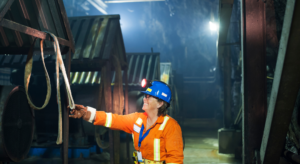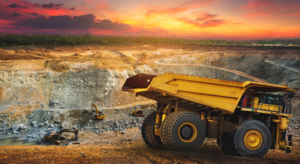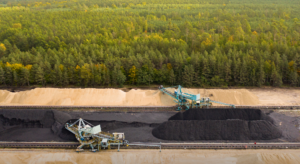The mining industry is embarking on a digital transformation. It now uses mobile technology and real-time data. This gives companies a step change improvements in efficiency and productivity. The core element of this revolution is mobile data capture. It has the ability to collect crucial data directly at the source through mobile phones.
Mobile data capture helps eliminate the need for slow and error-prone manual data collection. Now, the personals can easily gather data using smartphones or even wearables. Moreover, they can access and input this data from any location to cloud platforms. As a result, mining companies can now gain unmatched visibility into their operations thanks to the revolution in mining. Let us dive deeper into mobile data capture ahead.
Real-time data enables faster and better decision-making
In the past, data was siloed across an operation in documents and legacy systems. Site managers often had to make critical decisions based on lagging indicators in reports or static snapshots of performance. This made it difficult to respond quickly to emerging risks, bottlenecks, or other issues.
With mobile data capture, personnel can directly feed data from the field into cloud-based analytics platforms. Site managers can then view operational data in real time through interactive dashboards on any device. This real-time visibility enables rapid evidence-based decision-making. As a result, it helps to optimize production, safety, costs, and more.
Instead of waiting 24-48 hours to inspect equipment after a failure, managers can now detect emerging faults as they occur through sensor data. They can mobilize emergency maintenance in minutes, not hours. Production impacts can also be minimized.
Daily short-interval control meetings are also transformed. Rather than relying on dated reports, teams can collaboratively access up-to-the-minute visuals during their stand-up meetings. Issues and workarounds can be identified and discussed as they develop to keep operations on track.
Key applications of mobile data capture across the mining value chain
Mobile data capture is enabling digital transformation across mining activities:
Exploration and Development
Accurately mapping topography, geology, and infrastructure is critical prior to new mine development. In the past, engineering teams spent months compiling such maps from painstaking manual surveys and field notes. Mobile LiDAR scanning and high-resolution imagery from drones now allow rapid 3D mapping from the air. Users can directly upload mapped data to cloud platforms for immediate analysis.
Overlaying existing maps with new geophysical sensor data collected onsite can optimize target drilling locations. As a result, the revolution in mining improves the hit rate when exploring high-potential deposits.
Construction and Planning
During mine construction, mobile data capture gives planners real-time insight into progress and delays. Engineers can note issues directly on interactive maps. Progress photos validate on-schedule work. Material quantities used are digitally logged, optimizing order timing and reducing waste.
Such data allows enhanced coordination across contractors and disciplines. Additionally, request for information (RFI) cycles are reduced from weeks to days.
Extraction and Production
Sensors stream key production metrics like output rate, equipment health, and consumables usage to the cloud for monitoring. Abnormal readings trigger alerts for investigation. Moreover, data analytics pinpoint optimization opportunities.
Operators also use mobile devices to log production-related activities and delays as they occur. Furthermore, collecting contextual data at the point of work improves reliability.
Maintenance and Shutdowns
Unplanned stoppages cripple production and profitability. With mobile forms, technicians can also efficiently log maintenance work in the field, attach photos of issues, and request needed parts/tools.
Safety and Compliance
Inspection checklists, risk assessments, safety observations, and incident reports can be completed on mobile devices with geo-location stamps. Moreover, flag and mitigate issues sooner, improving compliance and ensuring audit readiness.
Sensors also proactively identify risks like vehicle proximity, toxic gas buildup, and unauthorized access before incidents happen.
How mobile data capture software connects it all
While mobile devices enable data capture, mining companies need centralized software. This is to contextualize and act on the data. Mobile mining management software acts as a hub. It aggregates field data flows into a single source of truth. Key capabilities include:
Seamless data collection
Personnel can easily collect data and attach photos or videos from any mobile device or wearable sensor. Moreover, online/offline support ensures reliability.
Central data environment
Data is securely hosted in the cloud or on-premises servers. Furthermore, access controls and permissions protect sensitive data while enabling company-wide transparency.
Contextualization
Disparate data streams are organized into interactive dashboards, maps, and more. So, this improved visualization provides context.
Configurability
Forms, fields, workflows, and analytics rules can be fully customized. It helps to match unique operational data needs without IT help.
Alerting and analysis
Real-time anomaly and pattern detection provide actionable, predictive intelligence from the data.
Seamless integration
APIs and connectors link field data bi-directionally. This is with key mining systems like ERP, scheduling, fleet telematics, process control, and more.
Collaboration
Teams can gain shared insights from data visualizations. Additionally, chats and annotation resolve issues faster.
By breaking down data silos and centralizing information in a cloud platform, mining operations gain newfound agility, transparency, and analytical power. As a result, this drives continuous improvements across the value chain.
Key considerations for implementation
Transitioning to data-driven mining powered by mobile capture does require changes. These are changes in technology, processes, and even company culture. So, some best practices include:
- Performing needs analysis across teams. It helps to identify and prioritize target use cases with the biggest potential impact.
- Defining data standards like taxonomy, formats, and collection procedures upfront. As a result, it ensures consistency as volumes scale.
- Running small pilot projects first. It is to demonstrate benefits and work out issues before expanding to new sites or activities.
- Providing hands-on end-user training on new digital tools. It helps to build capabilities and engagement.
- Confirming cellular, WiFi, and mesh networks provide adequate coverage. This is across all site areas that require mobile access.
- Considering long-term platform requirements. So, it includes integration, configurability, and analytics. It helps to avoid future data silos as adoption expands.
The exciting future of mobile mining
Mobile data capture currently represents just the tip of the iceberg when it comes to digitizing mining operations. As technology continues advancing, the possibilities are tremendous.
In the near future, industry analysts predict autonomous equipment, intelligent process controls, and AI-driven decision-making will unlock immense productivity. This will be great for mining companies while reducing risk. However, achieving this digital future requires a foundation of mobile data capture.
Data is the lifeblood of next-generation mining. Companies that embed data collection and analysis into their operations will gain a long-term edge. Miners can gain the visibility and insights needed to continuously adapt and optimize. This is by leveraging mobile technology to tap into data at the edge. So, mining has only begun to scratch the surface when it comes to leveraging data. However, mobile data capture represents the crucial first step on the industry’s digital journey. If you want to know about all the trends and new connective methods of mining to increase efficiency and profits, attending summits is important. One of the such anticipated events is the 4th Mining 4.0 Summit. It takes place on 17-18 January 2024 in Phoenix, AZ. The top leaders of the industries will be talking about crucial elements and will be showing case studies to guide you through the way. Moreover, it makes for a great networking opportunity as well. So, make sure you don’t miss the opportunity!





